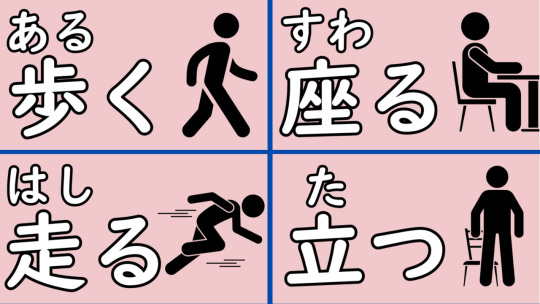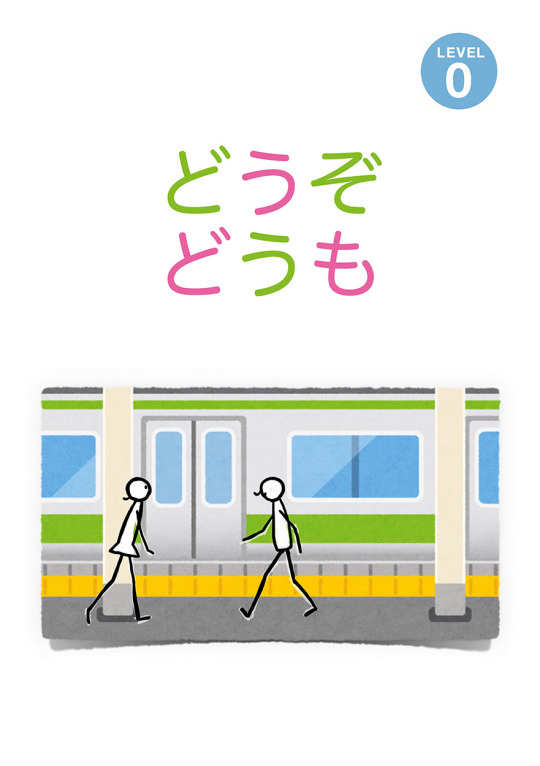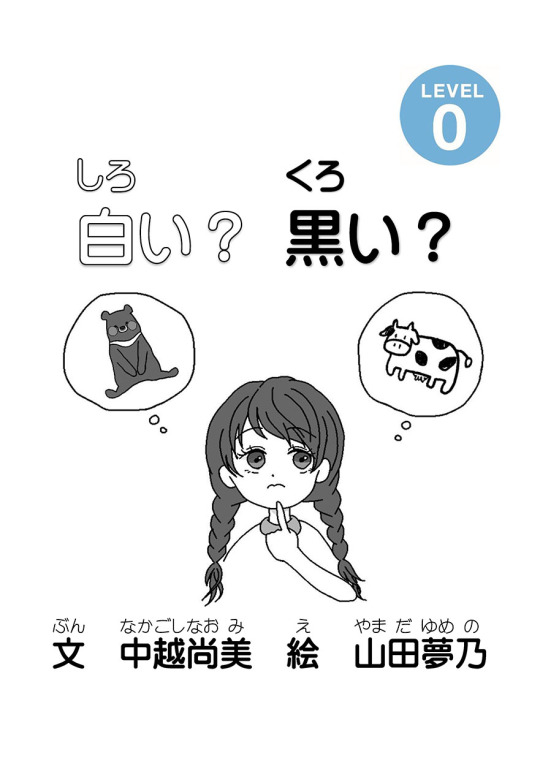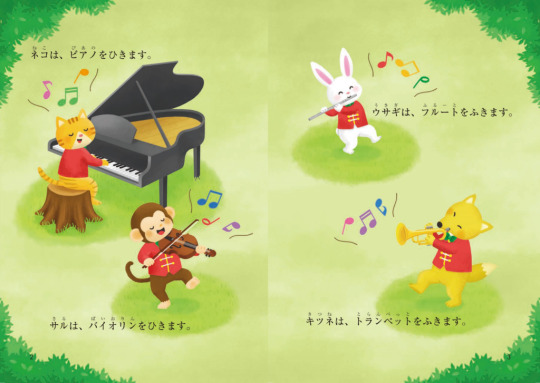#Nihongo Studying
Explore tagged Tumblr posts
Text


so many hobbies so little time
#bookblr#studyblr#literature#books#reading#dark academia#breasts and eggs#book recs#studying#studyspo#japanese#nihongo
811 notes
·
View notes
Text

#japanese#langblog#learning japanese#japan#langblr#japanese vocab#manga#anime#tumblr language#japanese vocabulary#shojo#learn kanji#study kanji#kanji practice#hiragana#日本語#nihongo#tokyo#kyoto#kawaii#asian
168 notes
·
View notes
Text
The 6 Differences Between は and が
DIFFERENCE 1
The important fact is AFTER は
• この犬は私のぺットです。This dog is my pet.
You want to emphasize that this is not a stray dog. It is not someone else's pet dog. It is MY PET. So anything comes after は is the main part you want the listener to pay attention to.
The important fact is BEFORE が
• この犬が私のベットです。This dog is my pet.
You want to emphasize that THIS IS THE DOG that is my pet. Not other dogs. Imagine you're at a park and there are 3, 4 other dogs playing together with your dog and you want to tell your friend that THIS DOG is the one that is your pet dog, other dogs are not yours. So, what comes before が is the main part you want to tell the listener.
More examples:
• このケーキはおいしいです。This cake is DELICIOUS! (You want to tell your friend that this cake is indeed very good. Your emphasis falls on おいしい, so you use は, because the important fact is AFTER は.
• このケーキがおいしいです。THIS CAKE is delicious. (You want to tell your friend that among all the cakes on the buffet table, this particular cake you are pointing to is the most delicious one. Others are not good.) Your emphasis falls on このケーキ (THIS CAKE), so you use が, because the important fact is BEFORE が.
DIFFERENCE 2
New information and things that you mention for the first time, use が. Old information or topics that have been mentioned earlier but is now repeated again, use は.
• 学校にマイクという男がいます。There is boy named Mike in my school.
You started the conversation with your friend by saying there's a new student named Mike in the school. That is the first time you mentioned Mike. It is new information, therefore use が.
• マイクはアメリカ出身です。Mike is from America.
You mention Mike the 2nd time now and it is no longer a new information. It is considered old information, therefore use は.
DIFFERENCE 3
Stating facts without adding your personal opinion or judgment use が. By adding your own opinion or judgment, use は.
• 外に猫がいます。There is a cat outside.
You are just merely stating a fact that there is a cat outside. This sentence doesn't include your description about the cat. No personal opinion or judgment about the cat.
• あの猫は白いです。The cat is white in colour.
You are putting your description, your judgment into the sentence about the cat. When you are adding your own thoughts, opinion, description about something, use は.
• 日本の料理はおいしいです。Japanese food is tasty.
You are putting your opinion/judgment about Japanese food in your sentence, therefore, use は.
DIFFERENCE 4
When you make comparison, use は. When you eliminate other options, use が.
• お茶は好きですが、コーヒーは好きじゃありません。I like tea but I don't like coffee.
DIFFERENCE 5
If two actions are done by the same person, use は. If two actions are done by two different persons, use が first, then use は for the second action.
• 私はごはんを食べるとき、テレビを見ます。I have my meal and I am watching TV.
• 私がごはんを食べるとき、父はテレビを見ます。When I have my meal, my father watches TV.
DIFFERENCE 6
To modify a phrase into a noun, use が.
• これは彼女が作ってくれたケーキです。
What cake is this? This is the cake that is baked by my girlfriend. The phrase 「彼女が作ってくれた」 is to modify the cake, to describe about the cake.
Quiz Time
• 部屋は広いです。
• 部屋が広いです。
In English, both sentences mean "The room is spacious." But what is the difference?
In 部屋は広いです, it shows a comparison contrast nuance (read DIFFERENCE 4). If you say this, the listener will believe that you are making a comparison of this room with all the other rooms in the house. You want to say this room is spacious, whereas the other rooms are smaller in size.
In 部屋が広いです, you are merely stating a general fact about this room being spacious (read DIFFERENCE 3). You are not making any comparison. Your sentence has no added personal judgement or opinion. You are stating a fact about the room being spacious.
#japanese#nihongo#studyblr#study blog#study japanese#study motivation#learning#learn japanese#language#grammar#jlpt#jlpt n5#jlpt n4#jlpt n3#jlpt n2#jlpt n1
512 notes
·
View notes
Text
YouTube Channels for Kids by JLPT Levels
(。•̀ᴗ-)✧ resources

こんにちは, Japanese learners! Learning a language is an exciting adventure, isn't it? To add a spark of joy to your Japanese learning journey, here's a collection of YouTube channels tailored for kids. Organized by JLPT levels, these channels offer a blend of education and entertainment for learners at different stages. Keep in mind, though, that JLPT levels aren't an exact science like math – language learning can be subjective in terms of difficulty. However, these resources provide a fantastic starting point and a fun way to explore the world of Japanese language and culture. Let's hop into this delightful world of animated learning and playful discoveries!
Friendly reminder to adjust your way of learning in order to make the most of what you're studying to reach the goal you truly want! read my post about it (ᵔ◡ᵔ)
꒰ა ˚₊ ✧・┈・╴N 5 ╴・┈・𐑺 ‧₊˚໒꒱
— Curious George (N5 level)
— Japanese folk tales/anime series (Japanese audio/Japanese subtitles) from BomBom Academy (N5 level)
— Peppa Pig (N5-4 level)
— Anpanman (N5-4 level)
— NHK education (N5-4 level)
꒰ა ˚₊ ✧・┈・╴N4 ╴・┈・𐑺 ‧₊˚໒꒱
— Cinnamon Roll, Sanrio (N4 level)
— [Anime] Atashin'chi (N4-3 level)
꒰ა ˚₊ ✧・┈・╴N3 ╴・┈・𐑺 ‧₊˚໒꒱
— Sesame Street Japan (N3 level)
— Chibi Maruko Chan (N3-2 level)
꒰ა ˚₊ ✧・┈・╴N2 ╴・┈・𐑺 ‧₊˚໒꒱
— Precure (N2 level)
またね~@inkichan
꒰ა ˚₊ ✧・┈・╴﹕꒰ ᐢ。- ༝ -。ᐢ ꒱﹕╴・┈・𐑺 ‧₊˚໒꒱
#japanese#nihongo#studyblr#learn Japanese#learning Japanese#japanese langblr#langblog#japanese studyblr#日本語#study japanese#japanese resources#free resources#resources#japanese free resources#youtube#JLPT#JLPT N5
767 notes
·
View notes
Text
I have collected the four most basic Japanese verbs.


#japanese#日本語#japaneselearning#learn japanese#japanese kanji#jlpt#nihongo#japanese language#study japanese#kanji
172 notes
·
View notes
Text
部屋探し|Apartment Hunting

Let me share with you my current struggles on finding a place to stay in Japan with this long vocabulary list!
住宅(じゅうたく)housing, residential building
住宅街(じゅうたくがい)residential area
最寄り駅(もよりえき)nearest train station
共同住宅(きょうどうじゅうたく)residential complex, apartment house
不動産屋(ふどうさんや)real estate agent
物件(ぶっけん)object, property (real estate)
ネット上(じょう)on the internet
掲載する(けいさい)post, insert (advertisement)
家賃(やちん)rent
共益費(きょうえきひ)common fee, utility fee
加算する(かさん)add
月額(げつがく)monthly amount
初期費用(しょきひよう)initial costs
入居する(にゅうきょ)move into
翌月(よくげつ)next month
翌月分(よくげつぶん)next month's rent
礼金(れいきん)key money (fee paid for rental rights)
敷金(しききん)deposit
保証金(ほしょうきん)deposit
清掃費(せいそうひ)cleaning fee
火災保険料(かさいほけんりょう)fire insurance fee
内見(ないけん)viewing
賃貸(ちんたい)lease, rent
賃貸借契約(ちんたいしゃけいやく)rental contract
借り主(かりぬし)debtor, tenant
貸主(かしぬし)lender, landlord
大家さん(おおや)landlord
一時に(いちどき)at once
滞納(たいのう)falling behind (with a payment)
Moving into a Japanese property comes with high initial costs which can be broken down into numerous different fees. Unfortunately, share houses are not necessarily fully excluded from this, but it really depends on the company. I'm glad that I could take some time to work and save up money before going to Japan. The first month will be very expensive.
#語彙リスト#japanese langblr#langblr#studyblr#japanese studyblr#learning japanese#japanese vocabulary#japan#japanese#study blog#japanese language#japanese studyspo#study motivation#studyspo#study notes#vocabulary#vocabulary list#jlpt n1#nihongo#日本語#日本語の勉強#life in japan
267 notes
·
View notes
Text
Japanese Reading Resources for Absolute Beginners
A question I encounter often is "How much Japanese should I study before I can begin reading in Japanese?"
From my experience as a learner and reader myself and from managing a Japanese book club for other learners I can honestly say that you can start way earlier than you probably think!
There are many resources that only require knowing hiragana. Those texts usually teach vocabulary through pictures and only use basic grammar.
Some are even simpler than that: The Japan Foundation's Hiragana Books are great for those, who are still remembering hiragana characters. Every short book introduces only 1-2 new characters, so it's a great reading exercise for those who've just started.

The free graded reader 「どうぞ、どうも」 by the NPO Tagengo Tadoku only uses the words 「どうぞ」 and 「どうも」 to write an entire story. Again, this makes for a great exercise in reading hiragana and understanding context. Another "level 0" recommendation by the same NPO would definitely be 「しろい?くろい?」. This book uses the full range of hiragana characters but the grammar is simple and all used vocabulary is illustrated.


Another site with great resources for absolute beginners is Nihongo Tadoku Dōjō. If you have memorized both hiragana and katakana and know how the particles を and で work you will be able to read this text about stationary (ぶんぼうぐ) and understand everything by looking at the pictures!

The resources linked so far can all be accessed completely free on the linked websites. If you have the money to spare, please also have a look at the box 「スタート」 from the series reberubetsu nihongo tadoku raiburarī published by the NPO Tagengo Tadoku and ASK (affiliate link). This box includes 8 little books in very simple Japanese.

All these texts for absolute beginners will get you started reading in Japanese with very little knowledge of characters and vocabulary.
Reading in Japanese is a skill that requires practice. But once you get used to it, it can be such a valuable tool to reinforce new vocabulary and grammar. So please don't wait until you're "ready" before you start reading - start early at your own level!
#my book reviews#reading in japanese#study japanese#learning japanese#日本語#japanese books#やさしい日本語#free graded readers#free tadoku graded readers#nihongo tadoku dōjō#absolute beginner level#japanese langblr#japanese language#japanese reading comprehension#japanese free reading resources#japanese reading resources
1K notes
·
View notes
Text


practicing some reading and some kanjis before i start lesson 4 :)
it's really cool to understand what i read even if it's just a very beginner content
#japanese#nihongo#studyblr#japanese studyblr#study#japanese langblr#langblr#japanese language#study inspo#learning japanese
81 notes
·
View notes
Text
JLPT Tips and Tricks: Conquer the Exam with Confidence
The Japanese Language Proficiency Test (JLPT) is a standardized assessment of Japanese language proficiency for non-native speakers. Whether you're aiming for N5, the introductory level, or N1, the most challenging one, thorough preparation is crucial for success. Here's a comprehensive guide to help you ace your JLPT exam:
1. Understand the Test Format
Familiarize yourself with the JLPT's structure and scoring system. The test consists of three main sections: Vocabulary, Grammar & Reading, and Listening. Each section has a specific number of questions and allotted time. Knowing the format will help you manage your time effectively during the exam.
2. Set Realistic Goals and Create a Study Plan
Establish achievable goals based on your current Japanese language proficiency and the JLPT level you're targeting. Develop a realistic study plan that incorporates daily or weekly study sessions. Allocate sufficient time to cover all the necessary grammar points, vocabulary, and Kanji.
3. Gather High-Quality Learning Resources
Utilize a variety of effective learning resources to enhance your preparation, such as textbooks, online courses, language learning apps, and practice tests, choosing those that align with your learning style and preferences.
4. Practice Regularly and Consistently
Regular practice is essential for success in the JLPT. Take practice tests frequently to familiarize yourself with the question formats, timing, and scoring system. Consistent practice will help you identify areas for improvement and build your confidence. Focus on Active Learning Techniques
Active learning techniques, such as flashcards, mnemonics, and summarizing key concepts, can significantly enhance your memorization and retention of Kanji, vocabulary, and grammar rules.
Besides, immerse yourself in Japanese, surround yourself with as much Japanese as possible. Listen to Japanese music, watch Japanese movies and TV shows, and read Japanese books and articles. This exposure will improve your listening comprehension, reading skills, and overall language proficiency.
5. Stay Positive and Believe in Yourself
Maintain a positive mindset and believe in your ability to succeed in the JLPT. Your confidence and determination will play a significant role in achieving your goals.
Remember, the JLPT is a challenging but rewarding exam. With dedication, perseverance, and the right strategies, you can conquer the test and achieve your Japanese language proficiency goals.
Goodluck for guys!

#japanese#learn japanese#language#studyblr#studying#studyspo#jlpt#nihongo#japanese langblr#japanese studyblr
86 notes
·
View notes
Text
JLPT N5 - している [Part 2]
Hey everyone, welcome to Part 2 of talking about している. This N5 grammar point is very basic but also very important. Let’s get into it shall we!
But first, here is your vocabulary:

【English Helping Verbs】
As I mentioned in Part 1, the “して“ in している can stand for any verb in て form. Sometimes it is actually する, but most times it will be some other verb.
Ok great, but what is the いる part?? Take a look at the following English sentences:
① Traffic accidents often occur here.
② I am eating.
③ The window is open.
Two of these sentences have both a helping verb and a main verb. In #1, there is only a main verb, which is “occur”. In #2 the main verb is “eating” and the helping verb is “am”. In #3 the main verb is “open” and the helping verb is “is”. Notice that one of the main verbs has the -ing suffix while the other two don’t. Make a mental note of this for later. 😉
【The いる in している】
Japanese also has helping verbs. Allow me to introduce you to one of the most common ones: いる!
The いる helping verb* adds nuance to the main verb. But here’s the thing - there are different versions of いる!In the している Part 1 article, you actually saw what I call the いる of Repetition. This いる does not translate to the -ing form of our verbs in English. If you see よく起きている for example, you should think “often occur(s)”. This is similar to example #1 above.
Examples #2 and 3 are not actions of repetition. For them, we need the other いる, which I call the いる of State or Condition. This いる sometimes makes us use that -ing suffix in our English translations. So if you just see 食べている, by default it would mean “started eating and then stayed in that state for some period of time”. Instead of all that, in English we would simply say “is eating”. This is similar to example #2 above.
開く is a different type of verb than 食べる**. Because of this, the いる of State or Condition does not lead to us using the -ing form. In this case, something is open and stays in that state for some period of time. We don’t say “is opening”. Instead we just say “is open”. For verbs like 開く, their English translations won’t use that -ing form. Instead they will be like example #3 above.
The key to the している grammar point is understanding what kind of main verb you have, and then which helping verb いる you are reading/hearing!
【いる of State or Condition】
Here are some examples where the helping verb いる expresses a state or condition.

This is how you say example #3 in Japanese.

= Tom is currently in the Philippines.
Interestingly, you could also say the following:
⑥ トムはフィリピンに来ています。***
⑦ トムはフィリピンにいます。
#5, 6 and 7 all say that Tom is in the Philippines but the nuance is different in each of them!
#5 says that Tom went to the Philippines and stayed there. This means that the speaker is NOT in the Philippines. On the other hand, #6 says that Tom came to the Philippines and then stayed there, meaning that the speaker is also there. #7 simply says that Tom is in the Philippines. We don’t have any information about where the speaker is located.

= Mizuki is wearing a white skirt and hat.
#8 has several things that I want to point out: First is that the て form of a verb can mark the end of a comment. Example 8 has two comments of equal value. This is one version of a Japanese compound sentence.
The second thing is that the ending helping verb can actually apply to TWO DIFFERENT main verbs! Native speakers hear #8 and understand the verbs to be both はいています as well as かぶっています.
The last thing is that verbs connected to clothes are very interesting. When you attach the helping verb いる, they can sometimes express the state of wearing something. However, in some contexts they can instead express the action of putting something on. For the N5 level luckily you won’t have to distinguish between wearing and putting on clothing so no worries. It is good to keep this tidbit in the back of your mind for the future though.
【Conclusion】
So there you have it. Now you know that the している grammar point can express several situations. You could have:
・Repetition - there will be a word/phrase that indicates that the action happens repeatedly. The English translation won’t use the -ing form of a verb
・State or a Condition - there MAY or may not be a word/phrase indicating repetition. The main thing to focus on is whether the verb is an action verb or not. This will help you decide if you need -ing or not.
As always, keep your eyes and ears open for different kinds of examples and try to notice patterns. You can do it!
Rice & Peace,
– AL
👋🏾
*I purposely say “the helping verb いる“because there is also the regular いる verb. It’s the same with the “be”, “do” and “have” verbs in English. “Am” in “I am a teacher” plays a different role than the one in “I am eating.”
** 食べる is a transitive verb while 開く is an intransitive verb. Usually transitive verbs will translate to -ing and intransitive verbs won’t. Of course there are exceptions so keep an open mind.
*** When choosing between 来ている、行っている、and いる think about where the speaker is located as well as if you want to stress the movement of the subject.
#japanese#japanese studyblr#japanese language#japanese grammar#日本語#isshonihongo#jlpt n5#jlptn5#jlpt#nihongo#japanese langblr#learn japanese#japanese lesson#japanese study#studying japanese#japaneselessons#learnjapanese#language#languages#language study#language studyblr#language blr#日本語の勉強#にほんご
47 notes
·
View notes
Text
Credit to @japanese_with_josh
I found this really helpful to hear a real life situation- not just from a textbook!
#japanese#language learning#studyblr#日本語#japan#langblr#japanese grammar#study japanese#nihongo#study#learn japanese#langblog#study kanji#travel#jlptn5#kanji#languages#language study#study abroad
688 notes
·
View notes
Text
My dad just gave me the best reason to keep studying japanese.
My second year of uni started, it's getting pretty tough and with my mental and other issues it's been really difficult to even work on my comic, let alone keep studying japanese. Long story short i haven't done a thing to improve my speaking or reading skills in the past two months.
But today my dad was cleaning up his work space/packing up his stuff. He's changing works. He brought home lots of stuff, including this funny looking usb. He gave it to me to check it out. He said he has downloaded a movie on it a long time ago and forgot to give it to me (guess constantly forgetting stuff runs in my family 😅). So today i put the usb in my pc and i found a single movie there: anthem of the heart. I was so happy! Until i played it. Just japanese, no subtitles. And i couldn't understand as much as i thought i would.
So, i'm rolling my sleeves up and logging into my renshuu account, dusting my grammar book that has been successfully collecting dust on my bookshelf, pulling out my study notebook and continuing studying!
And here i thought satoshi kon would keep me going but i already have all his work with subtitles so i guess that wasn't such a strong motivation...but this? Yup, it sure seems like a challenge! Also side eying my no longer human copy written in japanese 👀
30 notes
·
View notes
Text

#japanese#langblog#learning japanese#japan#langblr#japanese vocab#manga#anime#tumblr language#japanese vocabulary#study kanji#kanji practice#katakana#hiragana#japanese kanji#nihongo#shonen#shojo#izakaya#jjk#dandadan#naruto#polyglot#language#asian food#asian girl#asian
119 notes
·
View notes
Text
The Difference of それに、それでは、それで、それでも
1. それに = on top of that; in addition...
• このレストランは料理が美味しい。それに、値段も安い。
This restaurant serves delicious food. On top of that, the price is cheap too.
---------------------------------------------------
2. それでは = and so ...; and now...
• それでは、次の議題に移りましょう。
And so, let's move on to the next topic.
---------------------------------------------------
3. それで = so; therefore...
• 昨日は大雨が降った。それで、試合は中止になった。
Yesterday it rained so heavily. Therefore, the game was cancelled.
---------------------------------------------------
4. それでも = even though A, but still wanna do B; Despite..., but he still...
• 雨が降っている。それでも、彼は出かけるつもりだ。
It is raining. But he still intends to go out.
#japanese#jlpt#jlpt n1#jlpt n2#jlpt n3#jlpt n4#jlpt n5#language#learn japanese#nihongo#study blog#studyblr#study tips#study japanese#immersion#foreign languages#language lover#learning languages#learnsomethingneweveryday
230 notes
·
View notes
Text
Today, my nihongo no sensei asked me which was my "fave character" from Bleach. So, of course, I had to mention Byakuya. The thing is, that I've been learning kanji for some weeks now and even if I'm not expected to learn more than what she is giving us for N5 level, I really enjoy learning as many as I can. That includes N4 and N3 level ones (they aren't that hard, believe me). Therefore, I was able to write down Byakuya's name fully in Kanji: " 朽木白哉 ".
Now, because I'm a sucker for hidden meanings, we already know his name has a special (as Hisana does) one. The "Kuchi / 朽木" stands for "decay" and Ki/木 means "tree". As for his name, Byakuya/ 白哉 the combination forms "midnight sun" or "white light in the dark" or even "white night" (pretty abstract, but still beautiful and precise for his Hakuteiken technique/白帝剣).
Now, the little coincidence (it might be just a coincidence, believe me I'm just a beginner) I found is in the last kanji of his name : 哉. It is also used with the combination: 善哉 which both mean "well done" (pretty interesting if you think about Byakuya's obsession for perfection too) but also "Zenzai". Zenzai is a soup, that varies with every region. But in general is made of Azuki beans. And do you remember who wanted to cook Shiratama Zenzai for Byakuya in the "Honey Dish Rhapsody" novel? Yes, his beloved sister Rukia! 🥺💖


If it's just a coincidence I don't care, is still cute :P (But we all know how much Kubo likes to play with this hidden little easter eggs)
#sashi's nihongo experiences#bleach byakuya#kuchiki byakuya#byakuya kuchiki#rukia kuchiki#nihongo#bleach#learning japanese#remember I'm studying to N5
55 notes
·
View notes
Text
Discover these four Japanese adjective examples.




65 notes
·
View notes